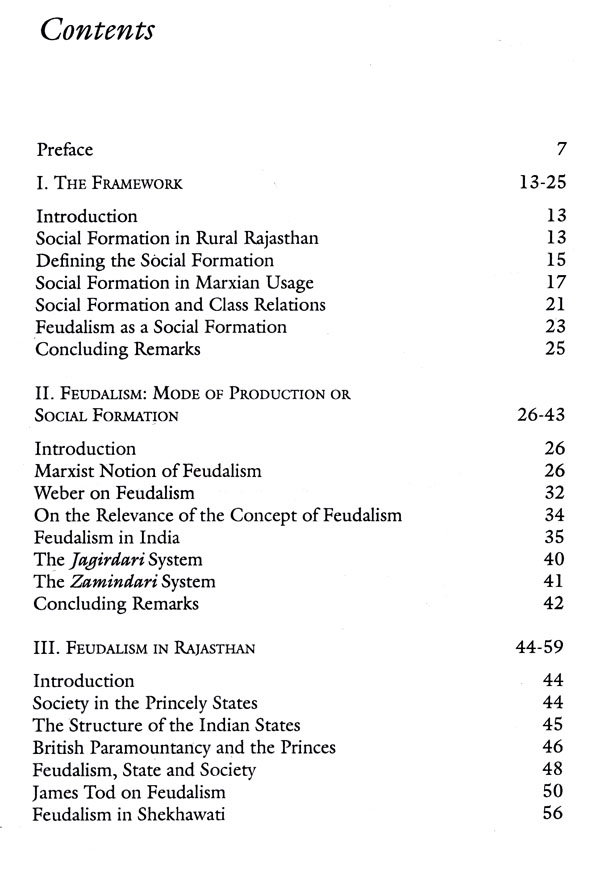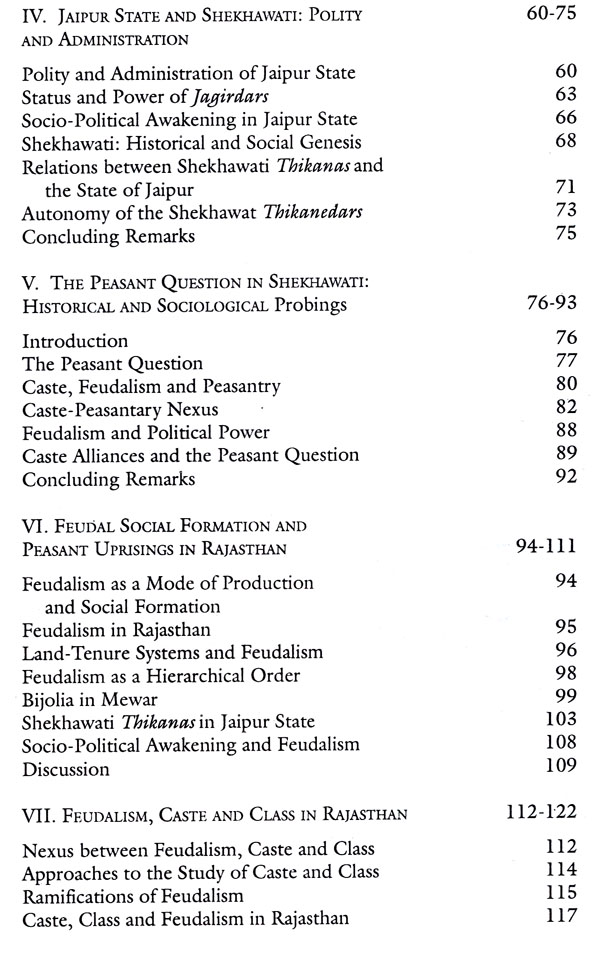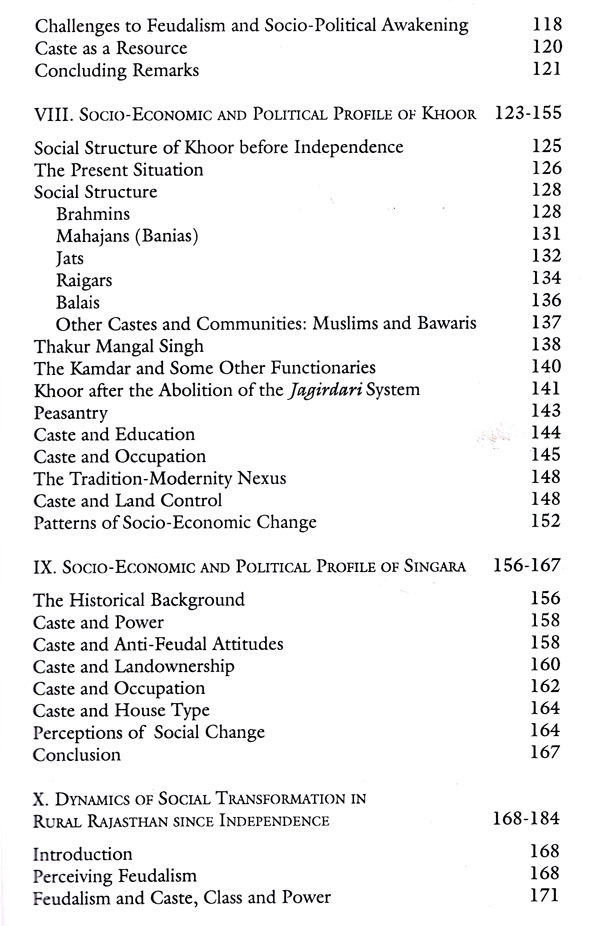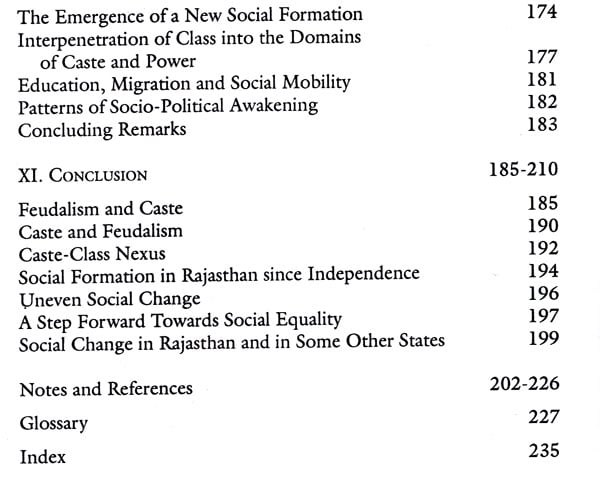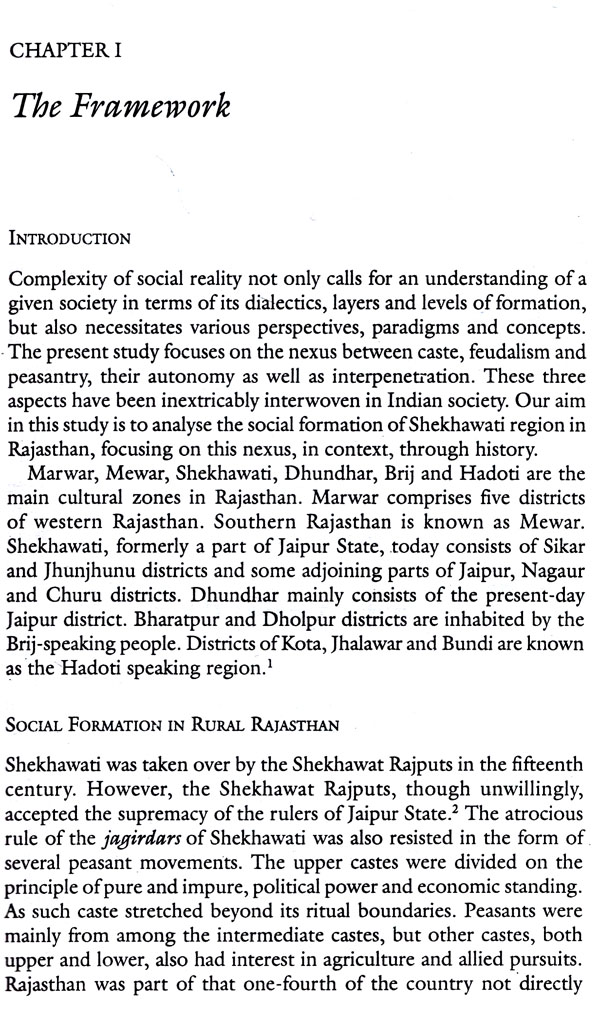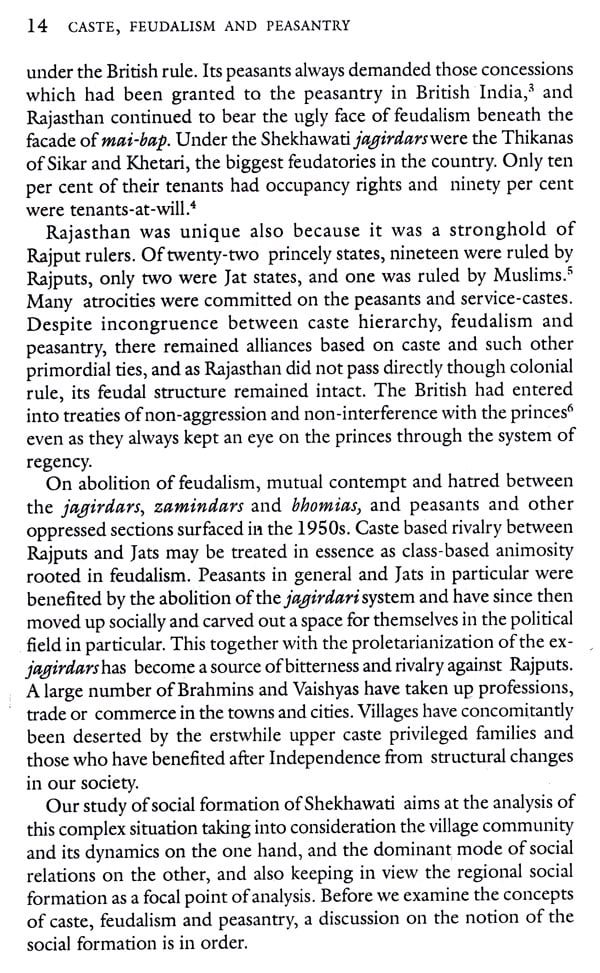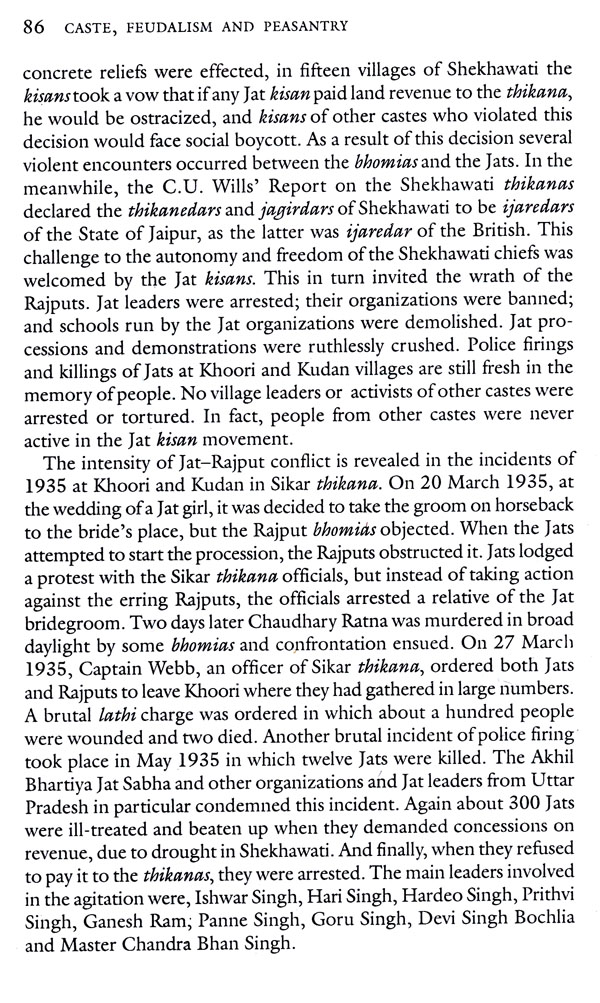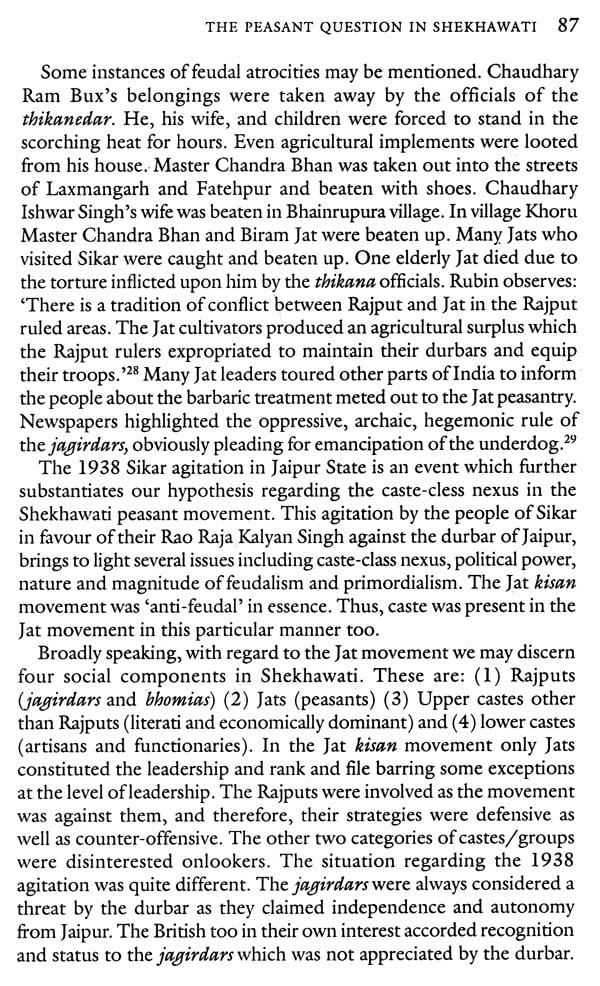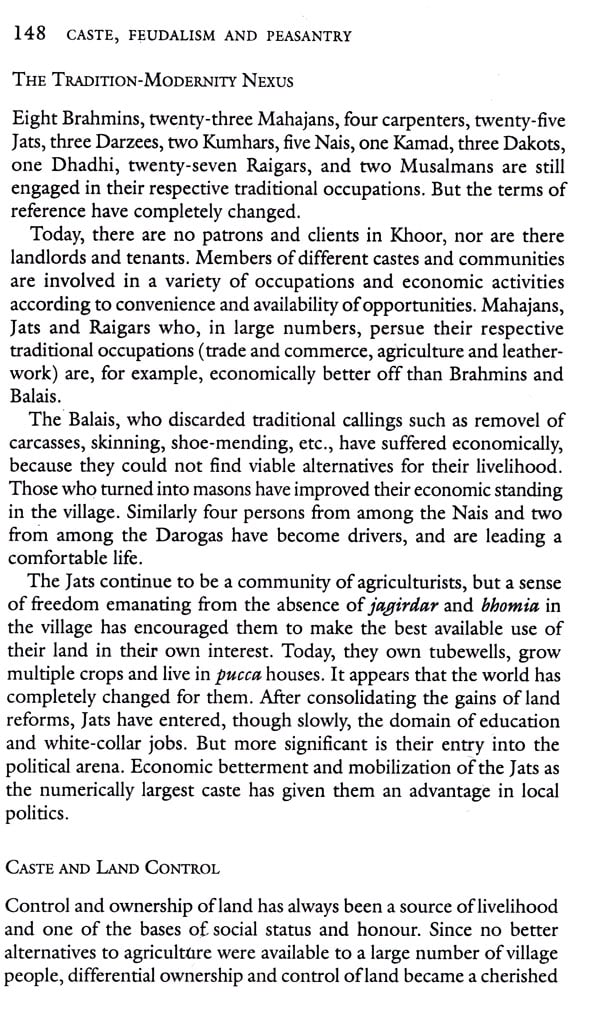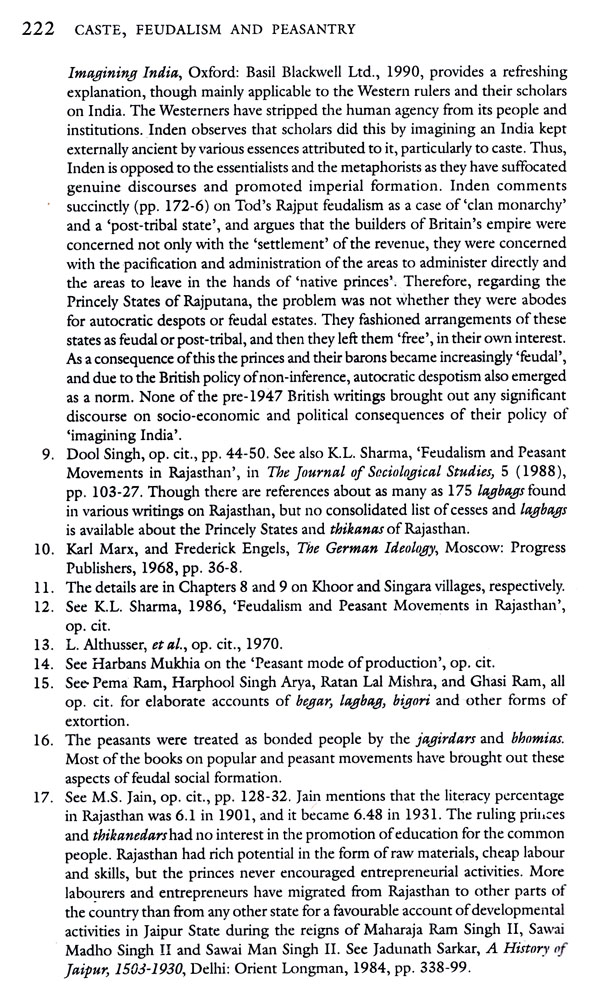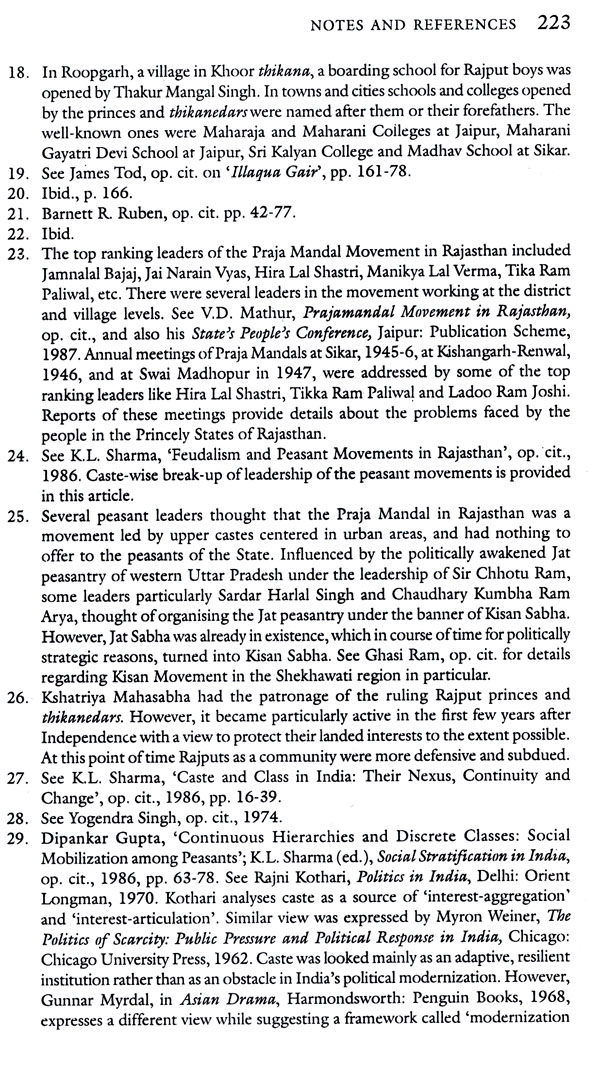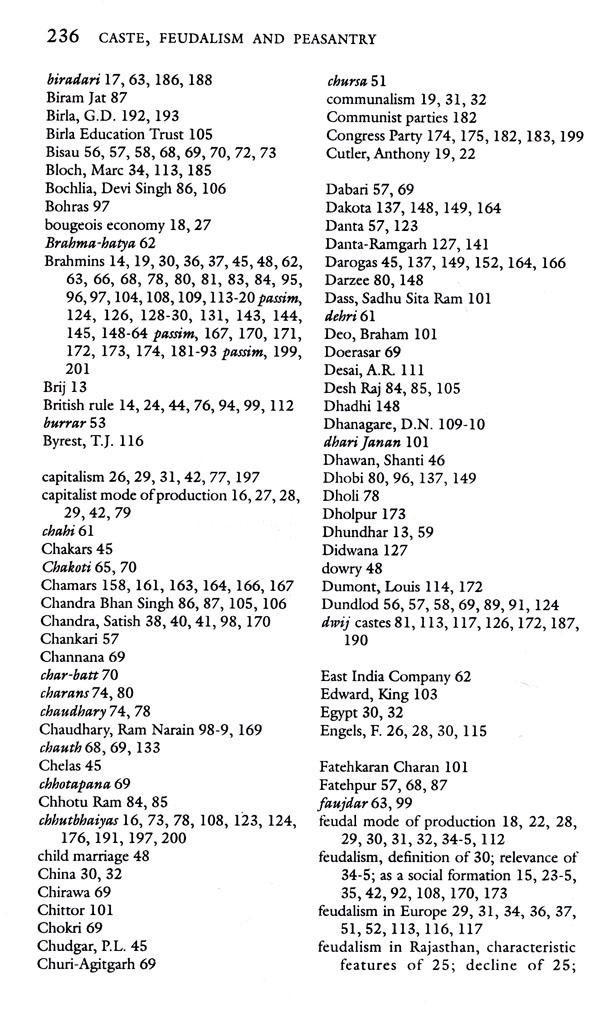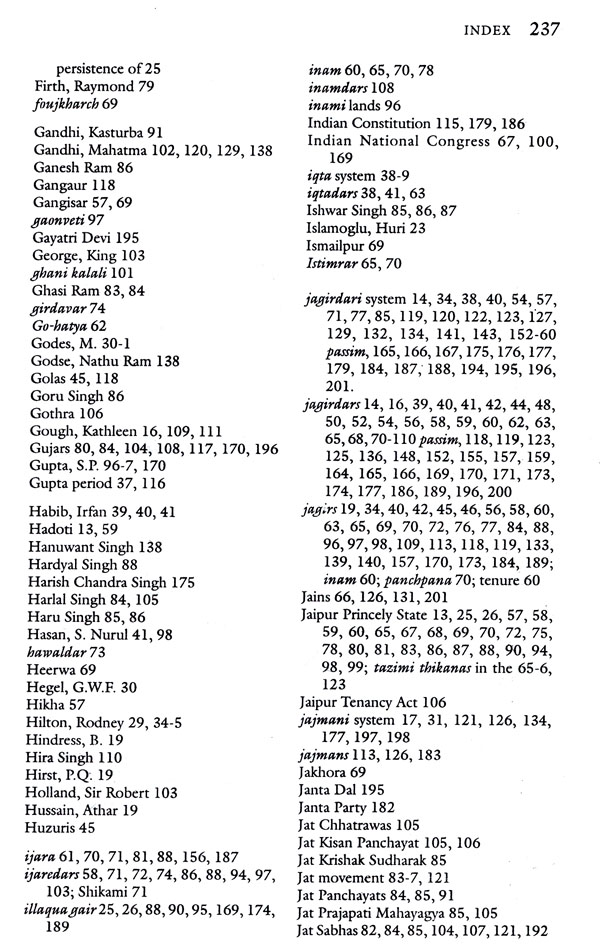
Caste, Feudalism and Peasantry (Social Formation of Shekhawati)
Book Specification
| Item Code: | NAZ835 |
| Author: | K. L. Sharma |
| Publisher: | Manohar Publishers and Distributors |
| Language: | English |
| Edition: | 1998 |
| ISBN: | 8173042098 |
| Pages: | 242 |
| Cover: | HARDCOVER |
| Other Details | 8.50 X 5.50 inch |
| Weight | 400 gm |
Book Description
The present book provides an interdisciplinary understanding of a given social formation in terms of interconnections between caste, feudalism, and peasantry on the one hand, and contemporary social transformation on the other. The study explains how feudalism functioned as an over-riding politico-administrative, social, and economic formation undermining even the institution of caste. The feudal mode of social relations as a dominant force guided the everyday life of the people of the Shekhawati region in Rajasthan. Such a view is substantiated by innumerable accounts, events, incidences, and locally written documents and books.
One could trace some continuity of the past social formation in eastern Uttar Pradesh, Bihar, and Bengal in the form of 'semi-feudalism' as characterized by some scholars, but such a situation is not traceable in the present-day Rajasthan which was a prominent stronghold of feudalism prior to Independence. Today a remarkable discontinuity in distributive processes and social relations, simultaneous occurrence of the processes of upward and downward social mobility. and a self-perpetuating process of social transformation could be witnessed in the Shekhawati region. However, despite such a desirable path of social transformation leading towards social equality, some unevenness is transparent in the present situation mainly due to the persistence of some social and economic inequalities. Land reforms and other measures have remained ineffective in neutralizing the continuity of these forms of inequality in modern Rajasthan.
Jajmani system, untouchability, and intra- and inter-caste relations have become dormant. Their ineffective, land reforms, adult franchise, etc., have paved a way for the emergence of a new caste-class-power nexus, and patterns of social mobility considerably relegating to the traditionally entrenched sections in the background. Definitely a new raj and a new social formation today characterize the Shekhawati region. The possibility of concentration of assets and resources in a few hands remains there despite the facade of the processes of democratization and decentralization relating to power and authority. The million-dollar question is 'What next?'
K.L. SHARMA is a Professor of Sociology, at Jawaharlal Nehru University, New Delhi. Besides having a keen interest in the study of society and culture in Rajasthan, Professor Sharma has extensively published in the fields of social stratification, professions, and social movements. Currently, Professor Sharma is a visiting faculty member at College de France, Paris.
I had thought of a life-time research work on Rajasthan, particularly on the Shekhawati region, but when I began on the ambitious project, I realized that it was an impossible task to accomplish in the stipulated three years. However, without getting daunted, I collected data from National and State Archives, Nehru Museum and Library, and extracted relevant information from Census reports, Gazetteers, government records, personal files, and conducted interviews and case studies in two villages, one each in Sikar and Jhunjhunu districts. In this study, I have used a very small fraction of that data. Many vernacular sources are available in the Shekhawati region. I have used them eclectically. The Vir Vinod, Annals & Antiquities of Rajasthan, Munhata Nansiri Khyat, Ojha's history of Rajasthan, work on the culture and paintings of Shekhawati, and recent writings on multifaceted social transformation in Rajasthan, require a thoughtful understanding and analysis. This acquires importance as Rajasthan is not a museum of fossil cultures, as sometimes portrayed in literature, festivals, or films.
My work centers on the hypothesis that a nexus existed between caste, feudalism, and peasantry prior to Independence. Feudalism was the dominant social formation; polity and administration and caste remained subordinate. After the abolition of the jagirdari system, a new social formation has emerged in which the erstwhile marginalized groups and communities have come to occupy center stage. However, there is an incongruence between their economic and political standing and their social and cultural advancement. I have discussed such incongruities to explain the nature and pace of social transformation in contemporary Shekhawati.
The project was financed by the Indian Council of Social Science Research, New Delhi. For many reasons, I could not complete it on time and am extremely grateful to the ICSSR for granting me extensions for the completion of the work.
I am grateful to all those who worked on the project at different points of time. Initially, Sri Jugal Kishor Sharma and Sri Gurchain Singh worked on the project. The major work, including field-work in two villages of Sikar and Jhunjhunu districts, was done by Sri Ratan Lal Mishra, who is, in his own right, an experienced scholar and writer on Rajasthan. I am immensely indebted to him. Without his painstaking efforts, useful data would not have been collected. I am also grateful to Professor Rajendra Joshi with whom I shared some of my ideas on Shekhawati. My daughter Rachna Sharma deserves thanks for helping me in the systematization of data from two villages. I am grateful to the authorities of Jawaharlal Nehru University for their cooperation in carrying out the project work. I also express my gratitude to staff members of the Centre for the Study of Social Systems and the Academic Staff College, Jawaharlal Nehru University for all the help and cooperation they have extended to me in this endeavor. My student Ranjita Mohanty deserves sincere thanks for meticulous reading of the book at the final stage of its publication. Lastly, I sincerely thank Mr. Ramesh Jain, the proprietor of Manohar Publishers & Distributors for his keen interest in the publication of this book with extraordinary zeal and commitment.
**Contents and Sample Pages**